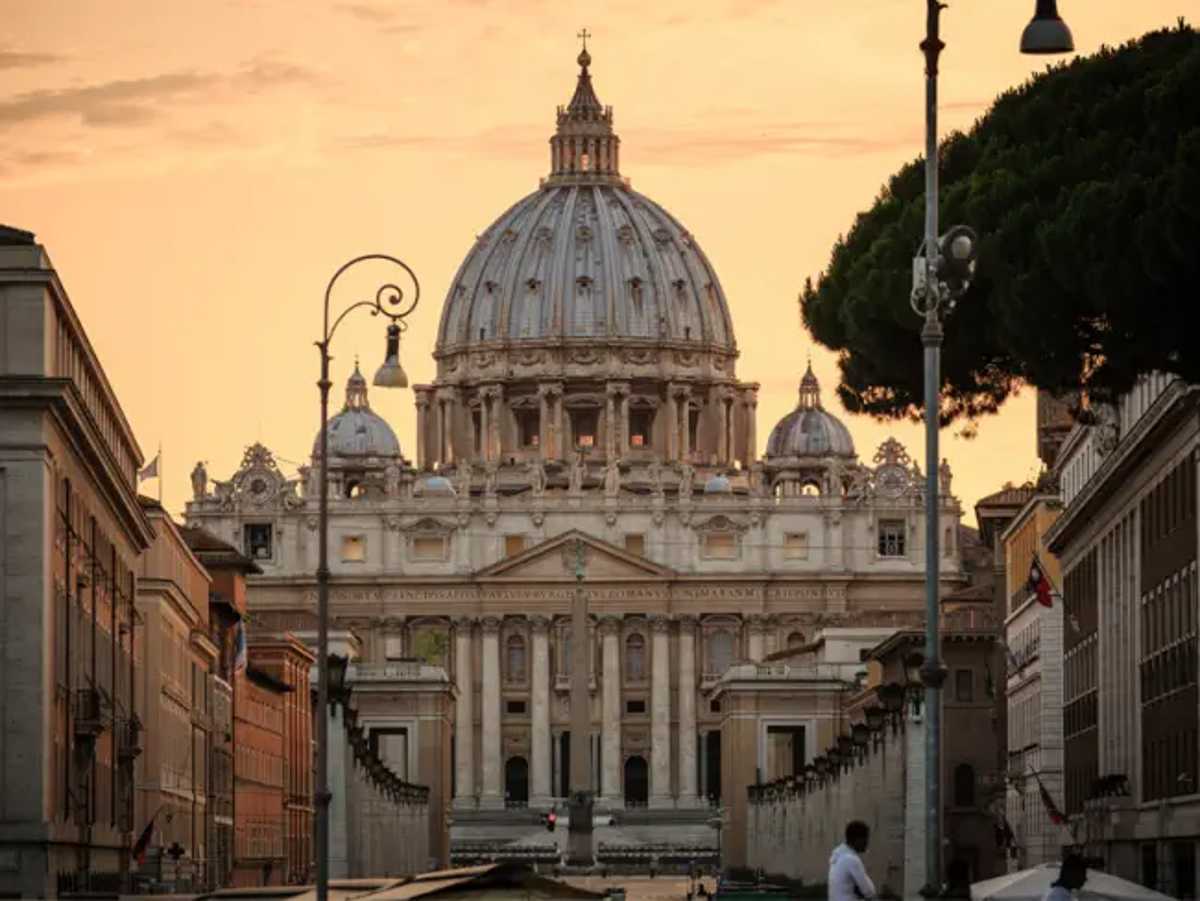
The original Nicene Creed of A.D. 325 was much shorter than the one used in churches today. The creed needed to be expanded as time went by and new challenges and theological questions arose from both outside and within the Church. The original creed read, “I believe in one God, the Father Almighty, Maker of things visible and invisible, and in one Lord Jesus Christ, the Son of God, begotten of the Father, Light of Light, very God of very God, begotten, not made, being of one substance with the Father; by whom all things were made, who for us men, and for our salvation, came down and was incarnate and was made man; He suffered, and on the third day He rose again, ascended into heaven; from thence He shall come to judge the quick and the dead. And in the Holy Ghost.”
The original A.D. 325 version was greatly expanded at the Second Ecumenical Council, also called the First Council of Constantinople, in A.D. 381. This second version is nearly identical to the one still used today.
Despite its shorter form, the original Nicene Creed is an excellent representation of the influences on early Christianity. Each line of both the original and the modern creed addresses a specific issue, debate or influence on Christianity that left a clear mark on the religion.
“I believe in one God, the Father Almighty, Maker of heaven and earth, and of all things visible and invisible.”
The opening lines of the Nicene Creed are a direct hit against the overwhelmingly polytheistic culture at the time. Christians and Jews were the only monotheistic peoples on the planet. As such, the first thing the creed declares is that there is only one God. In the fourth century, this alone would have differentiated Christians from almost anyone else in the world.The mention of opposites, heaven and earth, is a reference to the Platonic style of thinking that was very popular with many early Christians. While Christians did not buy entirely into Plato’s ideas, the theory of opposites wove its way through Christianity. Heaven and earth, sin and grace, salvation and damnation–the young religion already had a great many pairs of opposites.
“Visible and invisible” is a direct shot against the Gnostic Christians who would become the first group to be officially declared heretics. A number of Gnostics recognized many powers that emanated back to one Divinity. By declaring that God alone made all things, the Nicene Creed shut the door on reconciling Orthodox and Gnostic Christians.
“I believe in one Lord Jesus Christ, the Only Begotten Son of God, born of the Father before all ages. God from God, Light from Light, true God from true God, begotten, not made, consubstantial with the Father; through Him all things were made.” The next section of the Nicene Creed effectively defines Christianity by saying what it is not. The belief in Christ’s divinity sets Christians apart from Jews once and for all. They are no longer a strange Judean sect, but a religion in their own right. Similarly, the declaration that Christ was “begotten, not made” and “consubstantial with the Father” were aimed directly at Arius, an early Christian thinker. Arius held that Jesus was not equal to God, but came from God. They were not separate beings, but the Father was superior to the Son. This was later exaggerated to claim that Arius did not think Christ was divine at all. These lines also shut out those Christians who did not believe that Christ was fully human and fully divine.“For us men and for our salvation, He came down from heaven, and by the Holy Spirit was incarnate of the Virgin Mary, and became man.”
These lines are the first time that Christian soteriology is officially defined. While the basic belief that Christ came to save mankind is an assumption in Christianity today, there were plenty of early Christians who debated how exactly Christ saved mankind. Was it through the teachings He left behind, as Gnostics claimed? Was it through His simple presence? Did He save those who worshipped Him with the correct rituals? Many Christians had an opinion, but no one could say what was correct. There was not even a Bible to base belief on yet. Biblical canon would not be finalized for another century.These lines also contain another reference to Platonic thought: the imperfection of this world. While this idea also appears in Scripture, many early Christians, especially Roman or Greek converts, would be more familiar with Plato than John or Matthew. The idea of an imperfect world that people need saving from also reinforces the doctrine of original sin. Mankind needs saving regardless of where, when or how they live.
“For our sake He was crucified under Pontius Pilate, He suffered death and was buried, and rose again on the third day in accordance with the Scriptures. He ascended into heaven and is seated at the right hand of the Father. And He shall come again in glory to judge the living and the dead and His kingdom will have no end.”
Once again, the creed strikes out against Gnostic thinking. According to some Gnostics, Christ was not actually God Himself. He was a creature of God or a perfect man who was adopted by God, but He was not one with God. Other Gnostics held that Christ was one with God, but He did not die on the cross. The crucifixion was an illusion. This was in part because Gnostics believed that martyrdom was sinful as no merciful or good God would celebrate the death of His faithful. As such, the crucifixion could not be read as a story of martyrdom. The same lines, of course, reinforce the separation for Judaism.This section of the creed came after Nicaea. It strikes out against Gnostics, but ironically enough, reaffirms Christianity’s ties to a group that the modern religion reviles: the Pharisees. Pharisees were actually the Jewish group that was the closest to what Christ taught. There were many Sadduceean themes in His teachings, but most would have assumed He was a Pharisee as Sadducees did not believe in an afterlife or the resurrection of the dead. Pharisees believed deeply in both.
The Nicene Creed also makes it clear that the Old Testament is essential to Christian life. The Scriptures that spoke of the Messiah were largely those in the Old Testament. Without the line, “in accordance with the Scriptures,” it is possible that the modern Bible would be much, much shorter.
“I believe in the Holy Spirit, the Lord, the giver of life, who proceeds from the Father (and the Son)”
This section of the creed is partially responsible for the first schism in Christianity, that of the Orthodox and Catholic churches. It would also play a part in the Protestant reformation later.The Orthodox Church does not include the phrase “and the Son,” but the Catholic Church added it in the ninth century. Orthodox Christians claim that Catholics technically need two Holy Spirits, one from the Father and one from the Son. They also hold that modifying the creed is going against the Holy Spirit as the Holy Spirit worked to guide people to the correct phrasing of the creed. Calvin would later argue this point.
The official reference to the Trinity also harkens back to Origen, and early Christian writer. Origen was central to the development of the Christian view of the Trinity and the way that all three are God, but still remain separate.
“Who with the Father and the Son is adored and glorified, who has spoken through the prophets. I believe in one, holy, catholic and apostolic Church.”
Catholic, in this case, does not refer to the Roman Catholic Church, but to the universal Church of all the faithful. It claims that all Christians come to Christ and that the Church will not be permanently divided by earthly schisms. So far, this has largely held true. Denominations quarrel, but most people recognize that Protestants, Orthodox, Catholics and Nondenominational Christians are all still Christians. So long as that remains true, the Church will remain united. Given the turbulent times and how many challenges there were to Christian doctrine in the early days of the creed, this was an ambitious declaration.The creed here also claims descent from the Apostles and, once again, slaps down Gnostic thought. Gnostics did not hold to a single church but several and many different interpretations. This line, however, states that Christianity has a single church and doctrine. It is not determined by each individual person.
“I confess one Baptism for the forgiveness of sins”
The creed was modified after Nicaea to make it clear that Marcion theology was heretical. Marcion claimed that there were two Gods described in the Bible, the God of the Old Testament and the God of the New Testament. The God of the Old Testament was lower than that of the New Testament and was the creator of the imperfect, earthly world. The New Testament God created the perfect heaven. As such, Marcion claimed that there was no original sin. This negated the need for Baptism. Marcion was highly influential in his time and had been working on developing a Bible that included only the books and verses that upheld his ideas. He was eventually declared a heretic, but his influence made it clear to the Orthodox Church that an official Biblical canon was rapidly becoming a necessity.“And I look forward to the resurrection of the dead the life of the world to come.”
This final line may well be partially responsible for the Gospel of John’s inclusion in the canonical Bible. John is a very Gnostic book, but his Gospel is also the one that has the most detailed description of the afterlife. This line references his vision of the afterlife and allowed the Gospel to fall squarely in the Orthodox category.For how often the Nicene Creed is recited, few Christians are aware of the rich history that created the creed. Many of the largest influences on Christianity are referenced, and the history of the religion is laid out in those few lines. Despite what Constantine hoped, the creed would not stop Christianity from eventually fracturing back into a number of differing sects that are now called denominations. The creed would, however, allow Christianity to grow and solidify itself not as a scattered, loosely connected group of house churches, but a powerful religion with a base of believers who knew what it meant when someone declared, “I am a Christian.”

